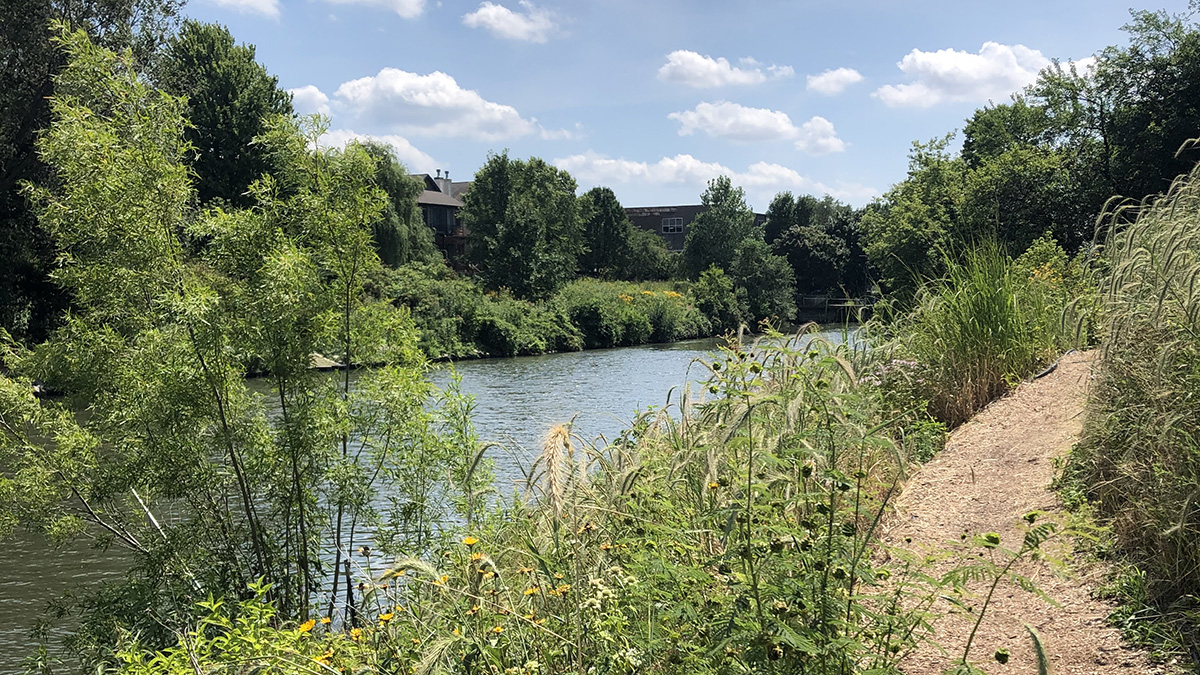feature
Promoting Biodiversity Through Urban Greenspaces
Designing, evaluating, and refining a solution for reducing human impact on the environment and biodiversity by applying in- and out-of-school science learning
Urban greenspaces (UGS) play an important role in the well-being of communities. With guidance from a teacher, students can be empowered to lead and design a modern UGS that supports communities and biodiversity. This lesson plan was developed with students and their communities in mind to promote awareness of the benefits of UGS between health, natural habitats, and healthy urban communities. In this lesson, the usage of greenspace emphasizes human-environment interaction to address public health and social ecological services (Taylor and Hochuli 2016).
The Role of Urban Greenspaces in Communities
It is now more important than ever that we turn to our urban greenspaces to benefit mentally and physically from being outdoors. Urban greenspaces are meant to be more than “aesthetically pleasing,” “covered in vegetation,” and “green enough,” (Figure 1; Wolch, Byrne, and Newell 2014).

Urban greenspaces can be intentionally designed to increase biodiversity, improve human interaction to nature, and the ecosystem services.
Consequently, the amount of research on UGS has grown (Taylor and Hochuli 2016). Studies show psychological, cognitive, and physiological benefits to humans interacting with nature (Keniger et al. 2013). Table 1 includes examples provided from Keniger et al.’s (2013) research on how experiencing nature can improve one’s quality of life.
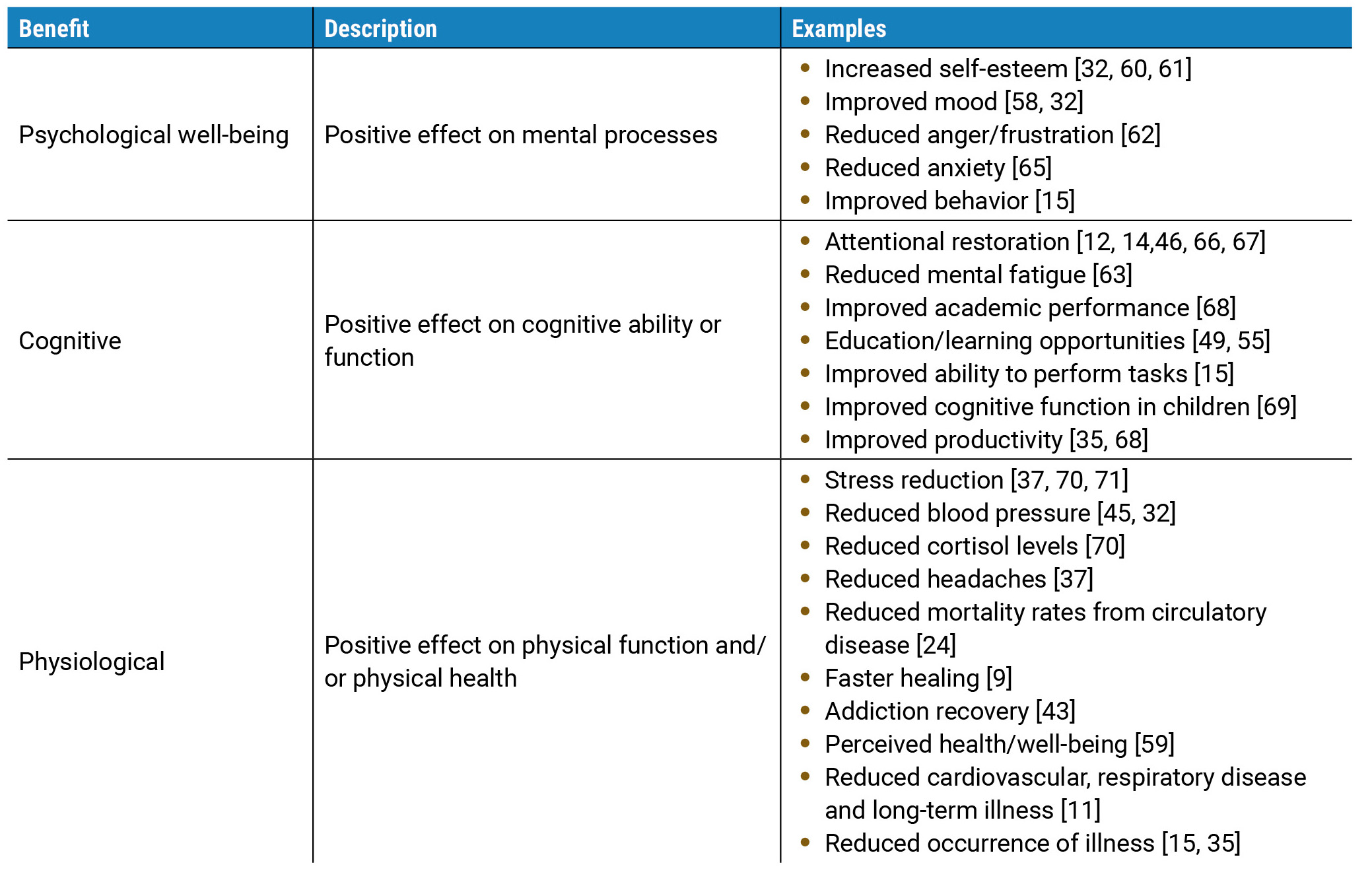
Designing UGS to meet community needs
Communities face daily stressors such as traffic, crime, and dense crowds (Keniger et al. 2013). The Crime Report (see Figure 2) for the west side of Chicago puts into perspective what students can encounter in an urban environment. Local flora and fauna face their own stressors, such as habitat loss and fragmentation, invasive species, and climate change (NGSS Lead States 2013). Urbanization has negatively affected urban ecosystems, which in turn affects ecological and social benefits for humans (Campbell-Arvai 2018). Urban greenspaces can be designed to meet the needs of a community, and students can be the link. As demonstrated in this lesson plan, students can design and evaluate UGS in their community, involve diverse stakeholders, and apply their science knowledge to improve biodiversity.

The Crime Report for 15 days in November 2018 on the west side of Chicago consists of four categories; (1) violent category consists of robberies or assaults, (2) property category consists of breaking & entering, theft, and criminal damage to property, (3) quality of life consists of drugs and disorder, and (4) 911 and other demonstrate variety of factors that urbanization impacts community members quality of life.
By interviewing community members, students learn the importance of listening to others and the power of using their community insight (Table 2), and can incorporate this information into their UGS design. They learn what types of UGS their community would like such as parks, trails, and community gardens, which can be intentionally developed to promote biodiversity and improve human well-being. According to Lepczyk et al. (2017), community members recognize the effort the city puts into biodiversity and natural spaces based on the maintenance of their local parks. By involving and investing in UGS, these actions can encourage citizens to want programming on biodiversity-related topics and participate in conservation initiatives (Campbell-Arvai 2018).
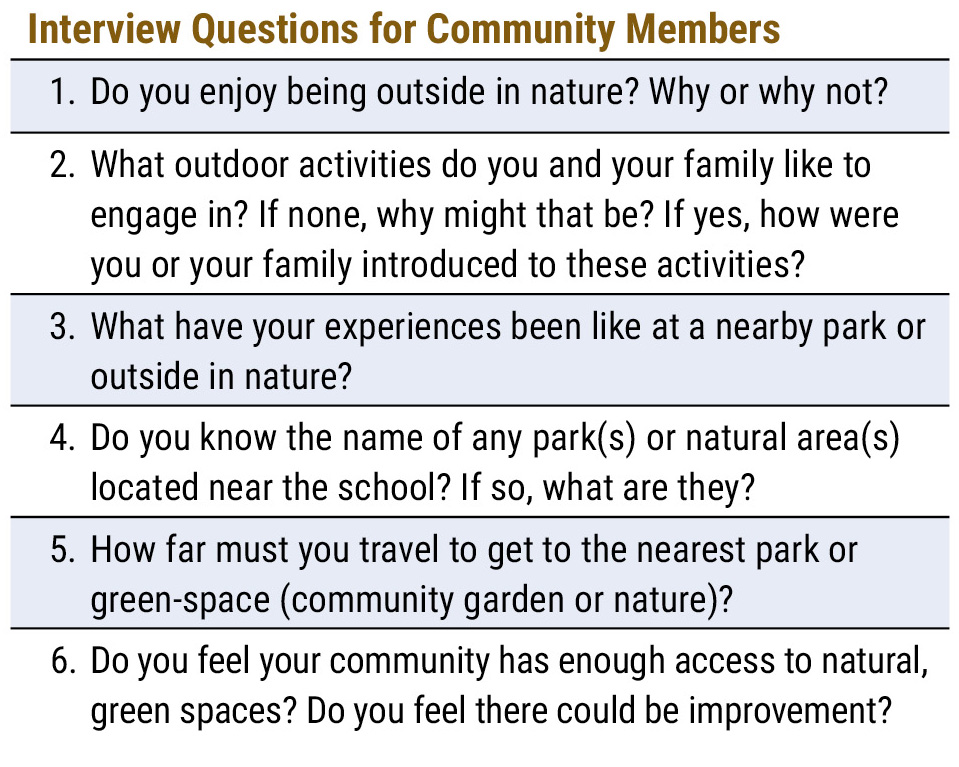
Engaging students outdoors increases the likelihood of them being involved in conservation initiatives and policies within their community (Lepczyk et al. 2017). This is why it is important to continue the connection with nature into high school where students are developing their identity and making decisions to become young successful adults (University of Chicago Consortium on Chicago School Research 2015).
Using Biodiversity as a Tool
Biodiversity includes genetic diversity (diversity within species), species diversity (between species), and ecosystems diversity (different biological communities) (Hui 2013; Primack 2010). The activities presented here have students obtain and communicate their knowledge on biodiversity and urban greenspaces. In this lesson, when discussing biodiversity, students focus on species diversity. The focus is on plant species richness, since a low plant biodiversity can impact the diversity of birds, insects, and other animals (McKinney 2008). Plant species can be defined in two ways: by morphological features or biologically. For this case, students will identify species using their morphological features, such as leaf and flower structure (Primack 2010).
Students implement their knowledge of biodiversity outside of the classroom through an inquiry-based lab. This lab was designed using the differentiated science inquiry (DSI) model, which allows students to have a learning experience at their academic level (Llewellyn 2014). Once students have collected data on species richness and diversity index of an UGS, students have an opportunity to redesign a potential area for an UGS or improve the green space in their community to promote biodiversity. Implementing the science content in this format furthers their understanding of the role biodiversity has on maintaining a healthy, sustainable, and productive ecosystem; this provides services that are vital for human well-being in a way that makes the content meaningful and relatable to students (Hui 2013).
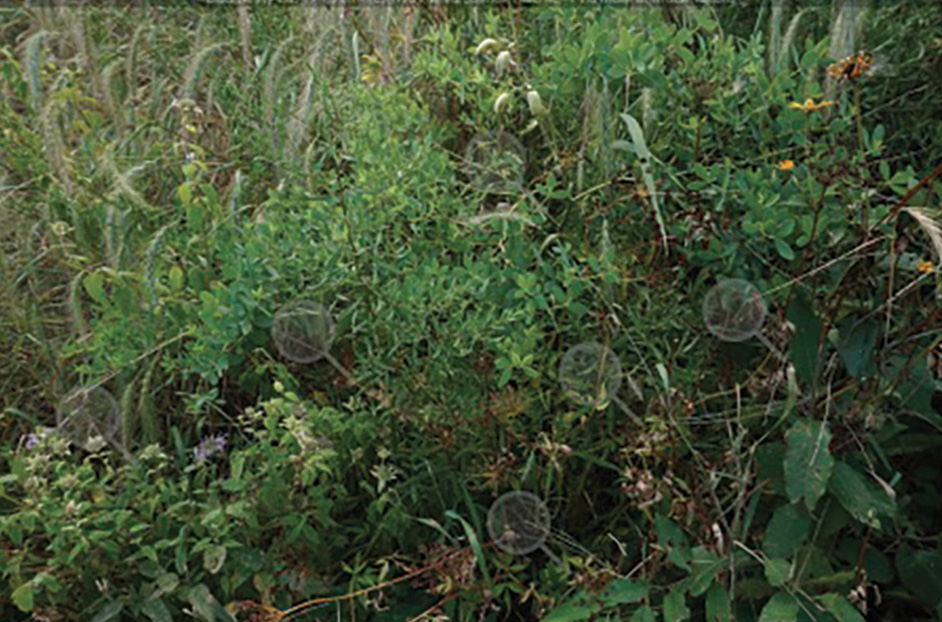
Students go on a virtual field trip to Chicago to engage in an inquiry lab “What is the relationship between native plants, human impacts, and biodiversity?
Benefiting From Ecosystem Services (ESS)
Sustaining biodiversity is a way to preserve landscapes’ recreational and inspirational value (NGSS Lead States 2013). Focusing on reducing the impact of human activities on the environment and biodiversity has a positive outcome on the provision of services and the regulation of services that ecosystems provide (Cardinale et al. 2012). Ecosystem services (ESS) that humans benefit from are the production of goods, support services, and cultural services. ESS include ecological processes such as water purification and clean air, climate regulation, erosion reduction, and pollinators (Semeraro, Aretano, and Pomes 2017; Campbell-Arvai 2018). Supporting services that focus on the conservation of biodiversity can improve cultural services, such as recreational and spiritual value (Semeraro, Aretano, and Pomes 2017).
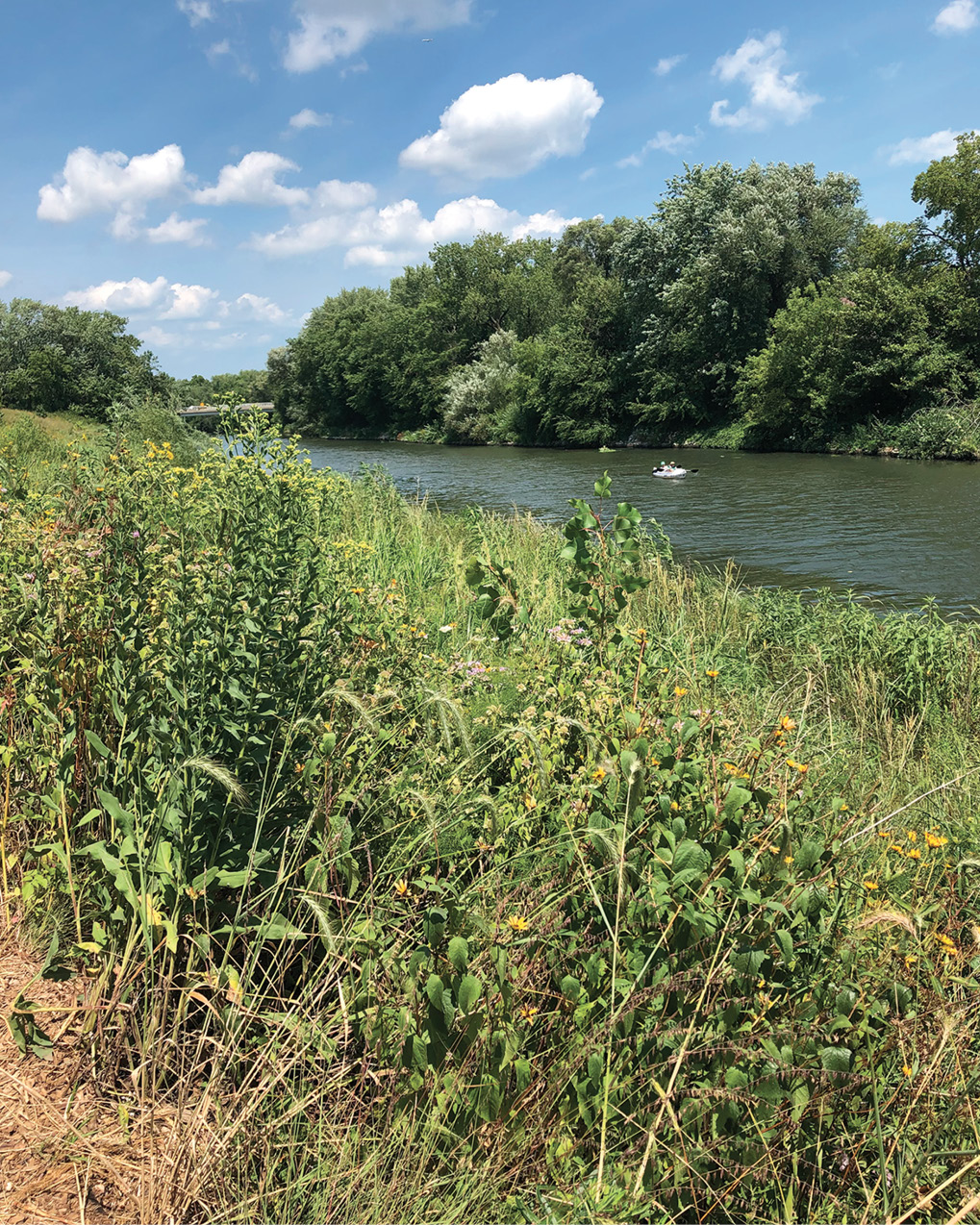
Promoting Biodiversity Through Urban Greenspaces, this image is of The Horner Park Riverfront Redevelopment Project started in 2016.
Students can take an active role in developing local ecosystem services by studying the complexities of their green space. They can ensure that their green space supports animal and plant populations’ needs for food, water, and shelter to help increase biodiversity (Campbell-Arvai 2018). This is important because diverse communities are more sustainable and offer more ecosystem services (Cardinale et al. 2012). Designing, evaluating, and refining a solution to a complex real-world problem using scientific knowledge throughout these activities empowers students to become proactive in their communities and in making decisions that impact the environment.
Benefits for Students
During my experience as an urban science teacher, I see that because technology is easily accessible and familiar, teenagers stay inside binge watching shows or interacting with their friends virtually. Furthermore, people of color tend to face racism when outdoors (Whitfield 2020). As a Latina growing up in the city of Chicago, I also lacked exposure to nature. While being outdoors is free, there can be barriers such as equipment and transportation that exclude people of color (Whitfield 2020).
As an urbanite and person of color who enjoys learning about the world and the environment, I have learned that to make change, there need to be opportunities for students to explore and engage in the world around them. Students’ prior knowledge and experiences can support them in making sense of new topics and real-world phenomenona. This helps students think and act at a local scale before understanding and caring for global issues. Through these activities, students become leaders within their community, become aware of the resources their community has, and think of solutions to foster urban greenspaces.
These spaces can then be safe havens for students to connect to nature and learn about their local flora and fauna. Driessnack (2009) states that children who are exposed to nature demonstrate an increase in creativity, problem solving, and improvement in their mental health regulation. Being outdoors can address obesity, which is disproportionately seen in minorities in urban environments (Margellos-Anast, Shah, and Whitman 2008). Young adults can in turn involve their family members to spend time outdoors and benefit from human-nature interaction.
Urban greenspaces provide opportunities for communities to connect and experience nature. This lesson promotes awareness of the urban ecosystem and health benefits of interacting with nature and can be a way to address environmental inequities as well as a step to encouraging pro-environmental behaviors.
Lesson Structure
Part 1: Why is Biodiversity important?
Students will learn the complex set of interactions that sustain biodiversity in a functioning ecosystem. Dr. Morton’s video (2014) discusses the different ecosystem services that humans obtain and can contribute to biodiversity. This format guides students in making meaning of key terms by using them in content that can relate to them while sparking curiosity in why biodiversity is declining and ways decision making can have a positive impact on local flora and fauna. The PowerPoint, Resource 5: Part 1: Introduction to Biodiversity resources, provides guided notes and initial response to the question, “Why is biodiversity important?”
A differentiated reading with options for articles incorporates student choice and has the potential for engaging students based on their particular interests related to biodiversity. Through the readings, students implement Talking to the Text strategies. This style provides students space to reflect about the wildlife they encounter and unprompted pro-environmental behaviors they do or want to do. At the end of the readings students answer questions to check for understanding and have a 3-2-1 activity to communicate their learning. Students then discuss their article with an elbow partner, building a sense of connection when communities are shared.
Part 2: Connecting Science Learning from the Classroom to Outside of the Classroom Virtually
Students apply their newly developed knowledge by investigating the question: “What is the relationship between native plants, human impacts, and biodiversity?” To do this, students collect data from a local urban greenspace and evaluate biodiversity data using the species richness and diversity index. Students will need
- Computer with internet access
If outdoors (optional):
- Piece of string to put in a circular form (3 meters long)
- Magnifying glass
- Native Plant Guide (for local flora, optional)
- Safety Protocol: https://static.nsta.org/pdfs/FieldTripSafety.pdf
In this lab, students choose between three versions of a differentiated science inquiry (DSI) lab: structured, guided, and self-directed inquiry. (See Resource 6: Part 2: Connecting Science Learning from the Classroom to Outside of the Classroom Virtually.)
Structured labs are scaffolded to help students carry out the investigation and have check-in points with the teacher. Students can ‘raise their hand’ on Google Meet or in any format the teacher suggests to indicate that the student is ready for a signature. During the lab, ‘Teacher’s signature’ is needed to move on to the next part. Students have shown excitement when they earn a signature because this also earns points on their assignment. This format ensures students are on track, and helps the teacher check for understanding and ask students if they have questions. However, these steps can be removed if it is harder to implement online. Guided and self-directed inquiry are less scaffolded and fewer ‘Teacher’s signatures’ are required.
The second part of the lab can be carried out in two different ways, depending on what best fits the class.
- Option 1: The teacher can take pictures of a local area by using the Wild Haired Science website (see ‘Call out Editor’ in Resource 4). Students can use this area to compare its biodiversity to Site A: Horner Park Riverfront.
- Option 2: Students can choose a local area in their community to explore for homework, or the teacher can do a field activity as a class by taking students to a local area near their school. Students will be able to collect data on species richness and diversity index. Using the diversity index, students can compare the area they analyzed with other students to discuss biodiversity the following day. Students can then make connections from the guided notes and the lab to construct an explanation for the inquiry question.
One thing I have encountered as an urban educator is the lack of availability of school buses during the spring. I encourage teachers to find a local area that is within walking distance. If this is not available, public transportation is an option. When taking students on a field trip, I highly suggest placing students in small groups (10 students per adult). Organize groups based on which students work well with each other. This can also be an opportunity to include student choice. Grade-level teacher chaperones can provide input on with which students they have built a relationship, helping to support students in staying engaged during the field activity. For students who need support or have special needs, ensure that the form of transportation and the area for the field activity is accessible. As mentioned in the Field Trip Safety guide, it is essential to visit the site beforehand to plan for any other safety concerns and keeping learning objectives clear to avoid off-task behavior.
If you let students choose a local area in their community to explore for homework, provide students at least the weekend or a week to complete the homework. Go over safety procedures using Field Trip Safety as a guide. Keep in mind the students you work with, their safety, and encourage them to go with at least one family member. This is an opportunity to engage families in the outdoors and a way to involve parents in their child’s learning.
Part 3: Designing and Evaluating Urban Green Spaces in our Community
Students design a solution for reducing the impact of human activities on the environment and biodiversity by focusing on developing areas with native species (see Table 1 and Resource 7: Part 3: Designing and Evaluating Urban Green Spaces in our Community), which will provide a health benefit for community members.
Part A: Purpose Behind Your Urban Greenspace is a way for students to learn how humans can have a positive impact on the environment by intentionally designing greenspaces to increase biodiversity. Students learn the importance of community voice by interviewing a neighbor about what they would like to see in their community (i.e., community garden, dog park, etc.). If this is a barrier for a student, they can interview a student who lives in the same community. This is a great opportunity for students to speak and listen to others, and communicate science by sharing what they are learning in class.
Students then use the information to evaluate how locals will benefit from interacting with nature. In Part B: Choosing an Area, students can apply their knowledge of biodiversity. Using My Maps on Google (see Figure 4), students mark current urban greenspaces as well as areas that have the potential space to be improved or converted into an urban greenspace.
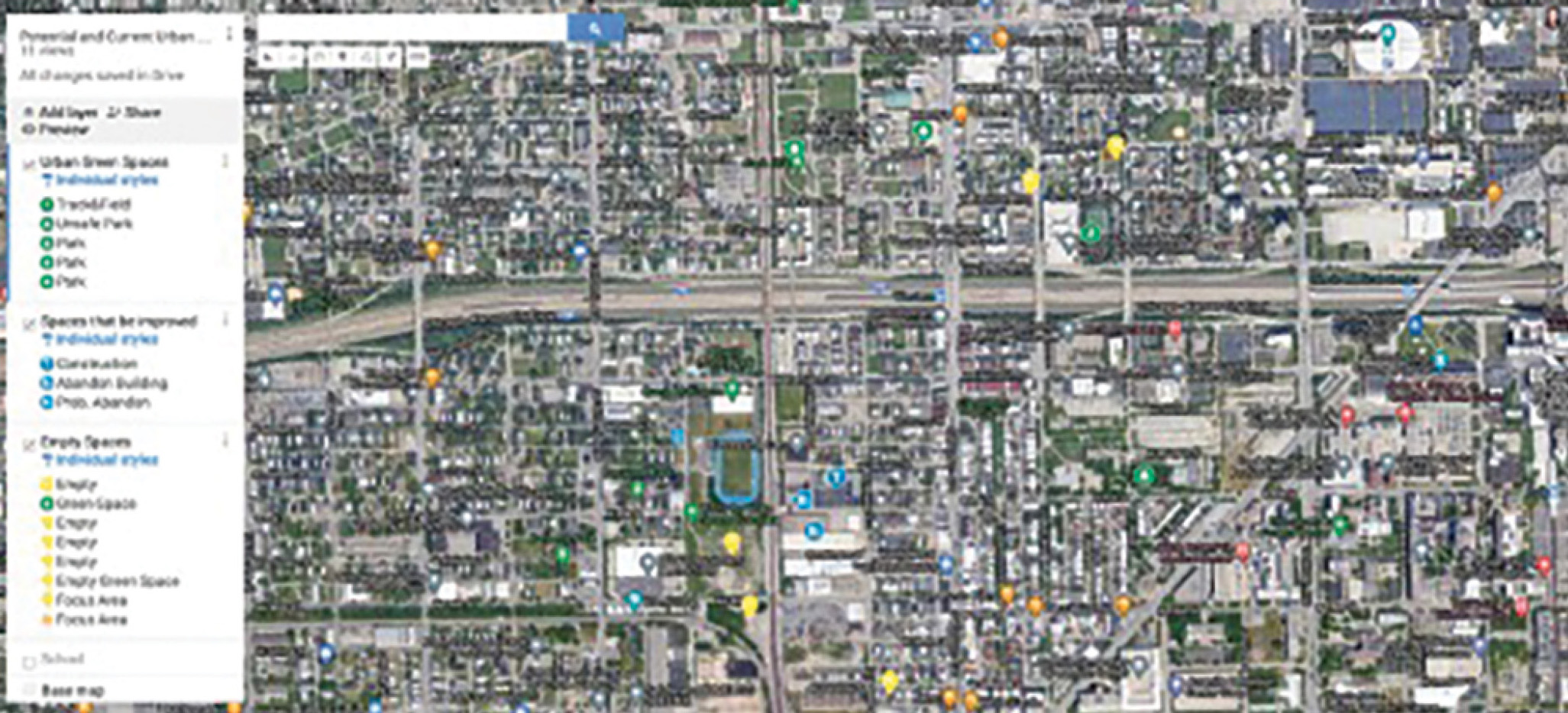
My Maps on Google is a tool for students to mark current and potential urban greenspaces in their community.
In Part C: Contacting Stakeholders to help develop or improve urban green space, students research potential stakeholders within the school and the community. Students include what support the stakeholder can offer to their solution. This experience of designing, evaluating, and identifying a solution to put into action is a way to increase academic engagement and interest in civic participation.
Part 4: Next Steps ‘Sharing Power’
Once the teacher has implemented these activities, students can transition into learning about the urban ecosystem or other anthropogenic factors, such as habitat loss and invasive species. Using student input to guide the next lesson based on their interest is a way to share power in the classroom and engage students in taking ownership of their learning. By listening to your students, the next lesson can include other environmental issues or conservation initiatives.
Assessment
After completing this activity, students should be able to
- Design an urban greenspace that promotes biodiversity
- Evaluate the contribution that different stakeholders can provide to accomplish developing an urban greenspace
- Identify solutions to increase biodiversity and human-nature interaction to increase human well-being
To encourage students to become leaders in their community, conservationists, and environmentalists, the assessment contains a Feedback Form, which was created using the guidance of Siegel et al. (2006) “Using Rubrics to Foster Meaningful Learning,” (see Figure 5). This rubric provides teachers the opportunity to communicate to students what they accomplished and leaves space for comments on ways to improve. Students can take advantage of implementing this feedback to improve their UGS design.

Feedback Form for Part 3: Human Impact on Biodiversity of Urban Green Spaces.
Conclusion
The overall goal of these activities is to help students make connections between human impact on the environment and biodiversity. This approach allows students to implement a project at the local level to learn about major environmental and biodiversity issues—“think global, act local” (Semeraro et al. 2017). As biodiversity increases, so will ecosystem services causing positive effects on human well-being (Naeem et al. 2016). Students may think that taking no action would have less of a negative impact on the environment. However, the ability to have personal choice and take actions can be powerful for students when they have the right tools and knowledge to make a difference in their community. ■
Online Connections
Resource 1
Example of a Native Plant Guide Online Resources: http://tinyurl.com/y37wc4ou
Resource 2
Example of a Native Plant Guide Book: Prairie Plants of Illinois: A Field Guide to the Prairie Grasses and Wildflowers of Illinois and the Midwest by Steve W. Chadde. ISBN 978-1951682132
Resource 3
Talking to the Text from The Reading Apprenticeship Framework: http://tinyurl.com/ybcrgq7t
Resource 4
Wild Haired Science: https://whscience.org/bdlab1/
https://whscience.org/bdlab2/
https://whscience.org/callouteditor/
Resource 5
Part 1: Introduction to Biodiversity resources
Why is biodiversity important? PowerPoint: http://tinyurl.com/yy7ed9w4
Entering Information on the excel to calculate Species Richness and Diversity Index: http://tinyurl.com/y6k78jab
What is biodiversity and why is it important? (Video embedded in the PowerPoint): http://tinyurl.com/ycpkbu2b
What is biodiversity and why is it important? Note Catcher: http://tinyurl.com/y6xnhomk
Four different reading about biodiversity from Newsela: http://tinyurl.com/y7vvqeay
Answer Key for the four different reading about biodiversity from Newsela: http://tinyurl.com/y94us2rk
Talking to the Text Bookmarks from The Reading Apprenticeship Framework: http://tinyurl.com/ybcrgq7t
Resource 6
Part 2: Connecting Science Learning from the Classroom to Outside of the Classroom Virtually
Field Trip Safety: https://static.nsta.org/pdfs/FieldTripSafety.pdf
- Biodiversity Lab (Structured): http://tinyurl.com/y93lh5wy
- Biodiversity Lab (Self-guided): http://tinyurl.com/y9jv756b
- Biodiversity Lab (Self-directed): http://tinyurl.com/yap8r7te
Biodiversity Lab Website—Virtual Field Trip of The Horner Park Riverfront Redevelopment Project containing the prairie restoration along the riverfront for students to analyze. There are two links for two groups/areas within the prairie riverfront.
Directions for biodiversity lab website for teachers to make their own: http://tinyurl.com/y59mkhof
Biodiversity lab website for teachers to make their own for Part B of the lab: http://tinyurl.com/whseditor
Native Plant Guide (optional for local flora): http://tinyurl.com/y37wc4ou
Species Richness and Diversity Index (Excel): http://tinyurl.com/y6k78jab
Resource 7
Part 3: Designing and Evaluating Urban Green Spaces in our Community
Human Impact on Biodiversity of Urban Green Spaces: http://tinyurl.com/yc6zhbuq
Feedback Form-Part 3: Human Impact on Biodiversity of Urban Green Spaces: http://tinyurl.com/yc3s7c2o
Michelle Loh (mmendez1021@gmail.com) was a science teacher at Crane Medical Prep High School at the time of writing this publication and is currently at Lane Tech College Prep High School in Chicago, Illinois.
Biology Environmental Science Equity Inquiry Instructional Materials Labs Lesson Plans Life Science High School



